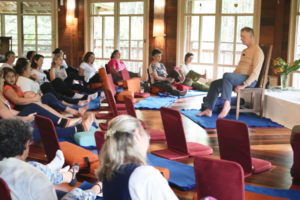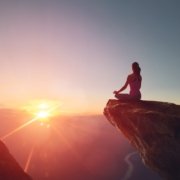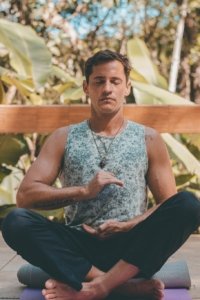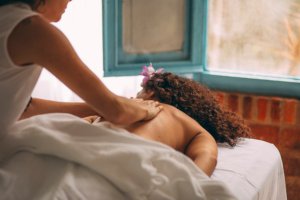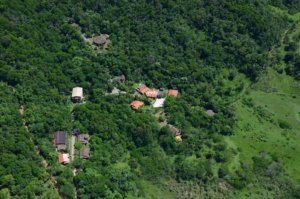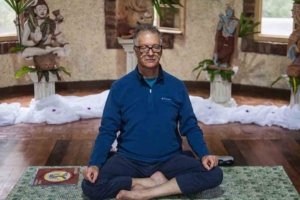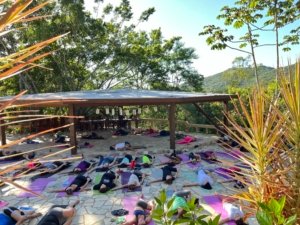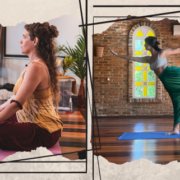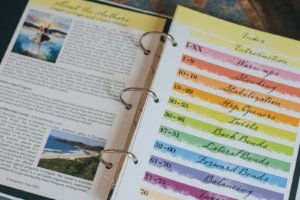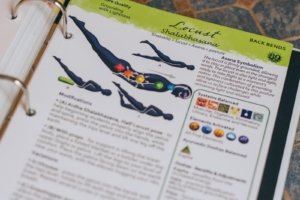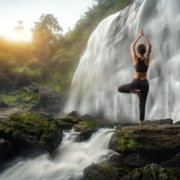Why do we chant Shanti, Shanti, Shanti Hari Om in Yoga?
Shanti means “peace,” and also has a wide range of connotations including harmony, silence, forgiveness, protection, comfort, and even abundance. We chant Shanti three times at the beginning and end of any Yoga practice and each of these three Shantis has a special meaning.
– The first Shanti is called adhi daivika, and refers to Shanti on the spiritual level. This first Shanti is a wish for peace in our relationship with the universe. With Shanti at this level, our planets are aligned and we are protected from forces of nature.
– The second Shanti is called adhi bhautika, and refers to the intention to cultivate Shanti with all other beings. Through this second Shanti, we recognize that all beings wish to experience happiness and avoid suffering within the level of their understanding. When we meet people with little knowledge, we recognize that their actions and attitudes only reflect their level of awareness and are not directed at us personally. So, we can remain in Shanti without judging or criticizing.
– The third Shanti is called ādhy ātmika, and refers to cultivating Shanti within ourselves through the practices of Yoga and meditation. To cultivate Shanti within ourselves, we need to become aware of our own patterns of negativity, in order to gradually reduce them through the practice of Yoga. Among the three Shantis, this last one is considered the most important because it is the one in which we have the ability to gain complete mastery. The more we cultivate Shanti within ourselves, we automatically cultivate Shanti in others and in our relationship with the Universe.
After the three Shantis, we chant Hari Om. Hari is one of the names of Shiva, the patron of Yoga who helps us to cultivate Shanti at all levels of our being.
Try chanting OM Shanti, Shanti, Shanti, Hari OM three times to affirm Shanti on all levels of your Being.

Shanti in the Bhagavad Gita
The practice of Shanti has great importance in Yoga texts. In the Bhagavad Gita 2.66, Krishna describes Shanti as follows:
nāsti buddhir-ayuktasya na chāyuktasya bhāvanāna chābhāvayataḥ śhāntir aśhāntasya kutaḥ sukham (Bhagavad Gita 2.66)
“For the one who is not connected with their power of discernment, there is no wisdom;
Without wisdom, there is no meditation;
Without meditation, there is no Shanti;
Without Shanti, how can one have happiness?”
Shanti no Mahabarata
The longest text on Shanti is in the Mahabarata, which has a whole chapter of 14,000 verses on Shanti. This text teaches all the ways we can achieve Shanti in this life and is divided into three main topics:
Shanti in Relation to Duties
– The first topic introduces Shanti which comes from doing our dharma in the right way. Dharma encompasses our life purpose, including profession and all relationships with family, friends, etc. All of these relationships should respect our roles and responsibilities and, at the same time, be true to our own Being. Because this is so challenging, we now understand why 14 thousand verses are needed!
Shanti in Relation to Challenges and Adversities
– The second topic presents how to maintain Shanti when facing adversity. This chapter highlights that we can’t practice Shanti only when things are going well. This is because the Universe is under the influence of the gunas, which are energies in opposition and thus will always produce ups and downs.
We need to use all experiences, both positive and negative, to cultivate wisdom and thus live with more Shanti. This topic also highlights that withdrawing from the world does not offer the possibility of Shanti because it does not offer the lessons, we need to transform challenges into opportunities, to transform problems into peace.
Shanti in Relation to Our Own Soul
– The third topic presents Shanti that comes from Yoga practices, including meditation, which leads to the recognition of our own True Being, our own Soul. It is only through the awakening of our own essence, whose nature is peace, that we can find Shanti in all facets of daily living. This blossoming of our inner Being simultaneously represents union with the Divine, the intelligence and energy at the heart of creation.
Through cultivating Shanti on all levels of our being, we gradually experience that our very nature is Shanti, Shanti, Shanti, Hari OM.
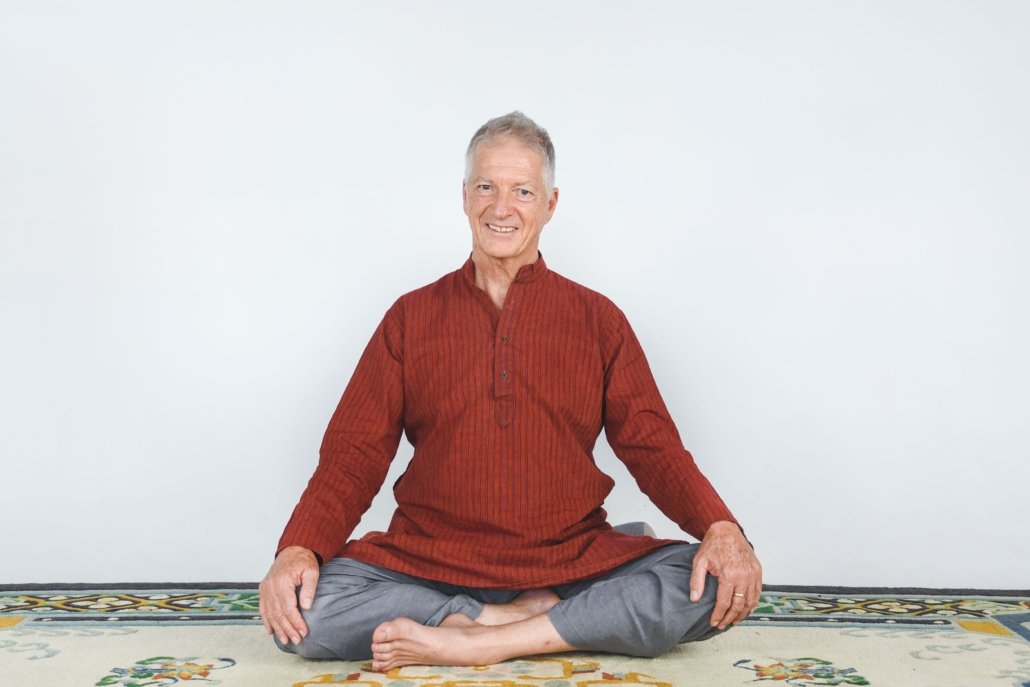
Joseph Le Page
Joseph Le Page founded Integrative Yoga and Integrative Yoga Therapy in 1993, and is a pioneer in the field of Yoga therapy training programs. He began teaching yoga therapy in hospital settings in 1995 and continues up to the present as Director of The Healthy Heart Program, which conducts Yoga Therapy group programs in public health settings in Brazil.
Joseph has been a speaker at major conferences including Yoga Journal, the International Association of Yoga Therapists, the Kripalu Yoga Teacher’s Association, the International Association of Yoga and Ayurveda, and others. He is co-founder and director of the Enchanted Mountain Yoga Center in Garopaba, Brazil, one of the largest Yoga retreat centers in South America.
He is the co-author of the book Yoga Toolbox for Teacher and Students, one of the most widely used materials in teacher training programs in the US and in Brazil, published by Integrative Yoga. He is also co-author of the book Mudras for Healing and Transformation, also published by Integrative Yoga.
Vyana Vayu and breath in every joint of the body: Watch the meditation with Joseph Le Page
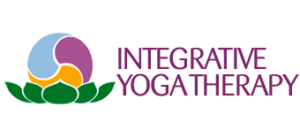


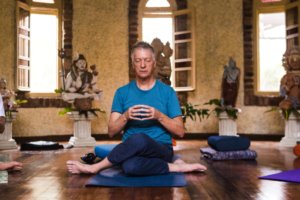 Joseph Le Page
Joseph Le Page

